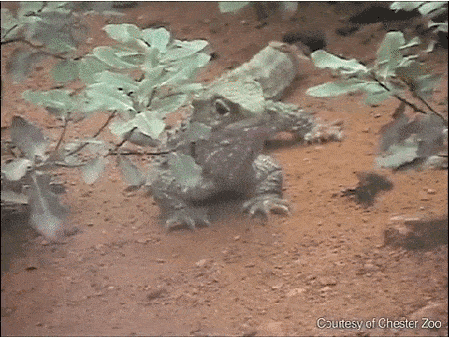The New Zealand tuatara (Sphenodon) is one of those unique animals that warrant revision for biology textbooks. The lizard-like reptile that is the only survivor of a group that was globally widespread at the time of the dinosaurs uses its highly specialized jaws to slice its food like a “steak knife”. Typically, chewing is associated with high metabolism in animals, but in this instance this is far from being the case.
Chewing: not just for mammals
The tuatara lives on only 35 islands scattered around the coast of New Zealand and was recently reintroduced to the mainland. Its diet consists of beetles, spiders, crickets, small lizards and, occasionally, sea birds.
[DON’T MISS] The amazing tuatara
Using a computer model, researchers at the University of Hull proved the complex moving structures of the reptile’s jaw as it chews its prey. This allowed them to image the pattern in 3D and from all angles with unprecedented detail. The model revealed that when the tuatara chews, the lower jaw closes between two rows of upper teeth. Once closed, the lower jaw slides forward a few millimeters to cut food between sharp edges on the teeth, sawing food apart.
Some reptiles such as snakes are able to swallow their food whole but many others use repeated bites to break food down. The tuatara also slices up its food, much like a steak knife.”
“Because mammals show the most sophisticated form of chewing, chewing has been linked to high metabolism. However, the tuatara chews food in a relatively complex way but its metabolism is no higher than that of other reptiles with simpler oral food processing abilities. Therefore the relationship between extensive food processing and high metabolism has perhaps been overstated,” said Lead author Dr Marc Jones, UCL Cell and Developmental Biology.
The tuatara provides an example in which specialization of the feeding mechanism appears to allow a broader diet.
“The slicing jaws of the tuatara allow it to eat a wide range of prey including beetles, spiders, crickets, and small lizards. There are also several grizzly reports of sea birds being found decapitated following predation by tuatara,” Dr. Jones said.
“Although the tuatara-like chewing mechanism is rare today, fossils from Europe and Mexico show us that during the time of the dinosaurs (about 160 million years ago) some fossil relatives of the tuatara used a similar system and it was much more widespread,” he added.
The iconic New Zealand reptile was described in a paper published in The Anatomical Record.










